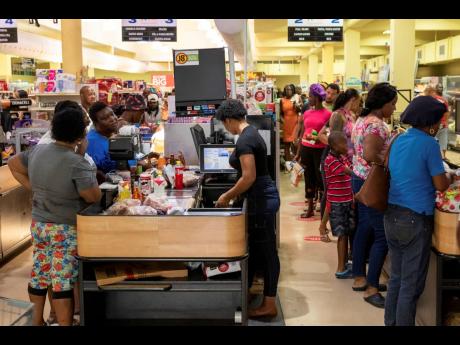Beryl makes landfall as Category 4 hurricane on Carriacou in Grenada
SAN JUAN (AP):
A dangerous and extremely powerful Hurricane Beryl made landfall on Monday on the Caribbean island of Carriacou after becoming the earliest storm of Category 4 strength to form in the Atlantic, fuelled by record warm waters.
Winds up to 150 mph (240 kph), just shy of a Category 5 storm, blew off roofs, uprooted trees and caused other damage on Carriacou, one of the islands of Grenada, and elsewhere in the southeast Caribbean.
“This is an extremely dangerous and life-threatening situation,” the US National Hurricane Centre said.
Hurricane warnings remained in effect for Grenada and St Vincent and the Grenadines as thousands of people hunkered down in homes and shelters. The last strong hurricane to hit the southeast Caribbean was Hurricane Ivan 20 years ago, which killed dozens of people in Grenada.
In a briefing, National Hurricane Centre Director Michael Brennan says Hurricane Beryl is churning westwards in the Caribbean with winds over 120 mph, storm surge and flooding rains.
NBC Radio in St Vincent and the Grenadines said it received reports of roofs being torn off churches and schools as communications began collapsing across the southeast Caribbean.
“Jesus Christ!” a woman yells in a video that shows tin roofs flying through the air.
In nearby Grenada, officials received “reports of devastation” from Carriacou and surrounding islands, said Terence Walters, Grenada’s national disaster coordinator. Prime Minister Dickon Mitchell said he would travel to Carriacou as soon as it’s safe, noting that there’s been an “extensive” storm surge.
Grenada officials had to evacuate patients to a lower floor after a hospital roof was damaged, he said.
“There is the likelihood of even greater damage,” he told reporters. “We have no choice but to continue to pray.”
On Monday afternoon, Beryl was about 65 miles (105 kilometres) northwest of the island of Grenada, moving west-northwest at 20 mph (31 kph).
In Barbados, officials received more than a dozen reports of roof damage, fallen trees and downed electric posts across the island, said Kerry Hinds, emergency management director. Wilfred Abrahams, minister of home affairs and information, said drones – which are faster than crews fanning across the island – would assess damage once Beryl passes.
A tropical storm warning was in effect for St Lucia and Martinique. A tropical storm watch was issued for Haiti’s entire southern coast, and from Punta Palenque in the Dominican Republic, west to the border with Haiti. A hurricane watch was issued for Jamaica.
Forecasters warned of a life-threatening storm surge of up to nine feet (three metres) in areas where Beryl made landfall, with 3 to 6 inches (7.6 to 15 centimetres) of rain for Barbados and nearby islands, and possibly 10 inches (25 centimetres) in some areas, especially in Grenada and the Grenadines.
The storm was expected to weaken slightly over the Caribbean Sea on a path that would take it just south of Jamaica and later towards Mexico’s Yucatan Peninsula as a Category 1.
“Beryl is forecast to remain a significant hurricane during its entire trek across the Caribbean region,” the National Hurricane Centre said.



